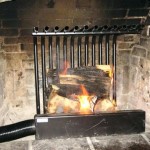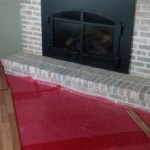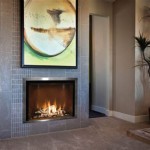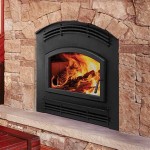Vented Gas Fireplace Logs Reviews: A Comprehensive Guide
Vented gas fireplace logs offer a convenient and aesthetically pleasing alternative to traditional wood-burning fireplaces. They provide the ambiance of a real fire without the associated hassles of gathering wood, building a fire, and cleaning up ashes. However, navigating the myriad of options available can be overwhelming. This article provides a comprehensive review of vented gas fireplace logs, exploring key features, performance metrics, aesthetic considerations, and safety aspects to assist in making an informed purchasing decision.
Before delving into specific product reviews, it's essential to understand the fundamental characteristics of vented gas logs. These log sets are designed to be used in a fully functional fireplace with a working chimney. They require a designated flue to vent the combustion byproducts, primarily carbon dioxide and water vapor, safely outside the home. Unlike ventless gas logs, vented options are generally considered to produce a more realistic flame appearance due to the ample airflow facilitating a brighter and more dynamic flame pattern.
The construction materials of vented gas logs are crucial for their longevity and visual appeal. Typically, logs are crafted from ceramic fibers or refractory cement, both chosen for their ability to withstand high temperatures. Ceramic fiber logs are lighter and tend to heat up faster, while refractory cement logs are denser and retain heat for a longer period. The detailing and hand-painting of the logs contribute significantly to their realistic appearance, influencing the overall aesthetic of the fireplace.
Key Point 1: Evaluating Realism and Aesthetics
One of the primary considerations for potential buyers is the realism and aesthetic appeal of the vented gas logs. This involves assessing the log arrangement, flame pattern, and overall visual impression. Ideally, the log set should mimic the appearance of a natural wood fire, featuring varying log sizes, textures, and coloration. Manufacturers often employ advanced molding techniques and hand-painting to achieve a heightened level of realism.
Flame pattern is another critical aspect. A desirable flame pattern should be dynamic and varied, with flickering flames that dance around the logs, creating a captivating visual display. The color of the flames also plays a role, with orange and yellow hues generally considered more realistic than blue flames, which are more characteristic of gas stoves or furnaces. Many high-end sets incorporate features that enhance the flame pattern, such as ember beds that glow and flicker, further simulating the appearance of a genuine wood fire.
Beyond the logs themselves and the flame, the inclusion of accessories can significantly enhance the fireplace's aesthetic appeal. Some sets include vermiculite granules or lava rocks that can be spread across the base of the firebox, adding texture and visual interest. Other accessories may include decorative grates or screens that further enhance the fireplace's overall appearance.
When assessing the realism of vented gas logs, it is helpful to consider the overall scale and proportion of the set in relation to the fireplace opening. A set that is too small may appear insignificant, while a set that is too large may overwhelm the space and detract from the overall aesthetic. Accurate measurements of the fireplace opening are essential for selecting a log set that is appropriately sized.
Key Point 2: Assessing Performance and Efficiency
The performance and efficiency of vented gas logs are important considerations, impacting both the heating capabilities and the operational costs. While vented gas logs are primarily designed for aesthetic purposes rather than primary heating, they do contribute some warmth to the surrounding area. The amount of heat produced will vary depending on the BTU (British Thermal Unit) rating of the log set, as well as the size of the firebox and the efficiency of the ventilation system.
BTU rating is a measure of the amount of heat that the log set can produce per hour. Higher BTU ratings typically translate to greater heat output. However, it is important to note that a higher BTU rating also means higher gas consumption, which translates to increased operating costs. Potential buyers should carefully consider their heating needs and budget when selecting a log set with an appropriate BTU rating.
The efficiency of the ventilation system also plays a crucial role in the overall performance of vented gas logs. A properly functioning chimney is essential for safely venting combustion byproducts and ensuring proper airflow. If the chimney is blocked or obstructed, it can lead to a build-up of dangerous gases inside the home. Regular chimney inspections and cleaning are therefore essential for maintaining the safe and efficient operation of vented gas logs.
The operational costs of vented gas logs are directly linked to gas consumption. Factors that influence gas consumption include the BTU rating of the log set, the local cost of natural gas or propane, and the frequency and duration of use. To estimate the operational costs, it is helpful to consult with a professional gas technician or use online calculators that take these factors into account.
Key Point 3: Evaluating Safety Features and Installation
Safety is paramount when it comes to vented gas fireplace logs. The installation and operation of these systems must adhere to strict safety guidelines to prevent potential hazards such as gas leaks, carbon monoxide poisoning, and fire. It is strongly recommended that a qualified professional, certified in gas appliance installation, handle the installation process.
A key safety feature is the presence of a safety shut-off valve. This valve automatically shuts off the gas supply in the event of a pilot light outage or a malfunction. This prevents the accumulation of unburnt gas, which could pose a significant explosion hazard. The safety shut-off valve should be regularly inspected to ensure that it is functioning properly.
Carbon monoxide detectors are essential safety devices that should be installed in any home with gas-burning appliances, including vented gas logs. Carbon monoxide is a colorless, odorless, and tasteless gas that can be deadly if inhaled. A carbon monoxide detector will alert occupants to the presence of the gas, allowing them to evacuate the premises and seek medical attention if necessary.
Proper ventilation is crucial for the safe operation of vented gas logs. The chimney must be in good working order and free of obstructions. Regular chimney inspections and cleaning are necessary to ensure that combustion byproducts are properly vented to the outside. Any signs of chimney damage, such as cracks or crumbling bricks, should be addressed promptly by a qualified professional.
The pilot light on a vented gas log set should be regularly checked to ensure that it is burning properly. A weak or flickering pilot light may indicate a problem with the gas supply or the burner assembly. If the pilot light is not burning properly, it should be adjusted or repaired by a qualified technician.
Before operating a vented gas log set, it is essential to read and understand the manufacturer's instructions. These instructions provide important information about the safe operation and maintenance of the appliance. Failure to follow the manufacturer's instructions could result in damage to the appliance or, more seriously, pose a safety hazard.
It is also important to keep flammable materials away from the fireplace opening. Curtains, furniture, and other combustible materials should be kept at a safe distance to prevent them from catching fire. Never leave a burning fireplace unattended, and always ensure that the fire is completely extinguished before leaving the room or going to bed.
In addition to professional installation, regular maintenance is vital for the longevity and safety of vented gas logs. This includes cleaning the logs periodically to remove soot and debris, inspecting the burner assembly for any signs of damage or wear, and checking the gas connections for leaks using a soap solution. Any repairs or maintenance should be performed by a qualified technician.
Furthermore, consider the warranty offered by the manufacturer. A comprehensive warranty can provide peace of mind and protect against potential defects or malfunctions. Review the terms and conditions of the warranty carefully to understand the coverage and any limitations.
By carefully considering the realism and aesthetics, performance and efficiency, and safety features and installation aspects, potential buyers can make informed decisions when selecting vented gas fireplace logs, ensuring a safe, enjoyable, and visually appealing addition to their homes.

Reviews For Duluth Forge Vented Natural Gas Fireplace Log Set 30 In 65 000 Btu Heartland Oak Pg 1 The Home Depot

Reviews For Procom 18 In Vented Natural Gas Fireplace Log Set Pg 1 The Home Depot

White Mountain Hearth Vented Gas Log Set Review Fireplaces Direct Learning Center

American Gas Log Salisbury Split 24 In Vented Natural Fireplace Logs Complete Set With Pilot Kit And On Off Variable Height Remote Ss24hd2pss101r The Home Depot

Napoleon Vented Gas Log Set Review Fireplaces Direct Learning Center

American Gas Log Cheyenne Glow 24 In Vented Natural Fireplace Set With Complete Kit Manual Match Lit Cg24hdmtch The Home Depot

Reviews For Procom 18 In Vented Natural Gas Fireplace Log Set Pg 1 The Home Depot
-Vented_q8bs-66_pt4w-91_taba-3o.jpg?strip=all)
Bonfire 36 Inch Gas Log Set For Masonry Fireplaces

American Gas Log Dundee Oak 30 In Vented Natural Fireplace Set With Complete Kit Manual Match Lit Do30hdmtch The Home Depot

Real Fyre W White Birch Vented Gas Logs
Related Posts








